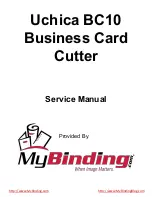
25
B.5.3
OGRANICZNIK UD
Ź
WIGU (DLA
Ż
URAWI BEZ RADIOWEGO STEROWANIA)
Zadaniem
ogranicznika
ud
ź
wigu
jest
zabezpieczy
ć
konstrukcj
ę
ż
urawia i/lub zapewni
ć
statecznos
ć
dla
ż
urawia. Zadziała wtedy gdy moment pochadz
ą
cy od
ładunku na haku, przekroczy maksymaln
ą
warto
ść
wyregulowan
ą
na zaworze.
Ponizsze ilistracje pokazuj
ą
mo
ż
liwe i niemo
ż
liwe ruchy
ż
urawia.
Kiedy siłownik pierwszego wysi
ę
gnika jest w
pełni
wysuni
ę
ty
i
dalej
naciskamy
d
ź
wigni
ę
podnoszenia
to
uruchamia
si
ę
ogranicznik
przeci
ąż
enia pomimo tego,
ż
e
ż
uraw nie jest
obci
ąż
ony.
W tym przypadku, aby odblokowa
ć
ż
uraw nale
ż
y
nacisn
ąć
trzy/cztery razy d
ź
wigni
ę
obni
ż
enia tego
siłownika i wtedy powoli zsun
ąć
siłownik 1-go
wysi
ę
gnika.
B.5.3 LOAD LIMITING DEVICE (NOT-RDC
CRANE)
The purpose of the load limiter device is to protect the
structure of the crane and/or safeguard machine stability. It
intervenes when the moment given by the load on the
hook, exceeds the max. value of setting.
The illustrations that follow, show the enabled and disabled
movements of the crane.
Wenn the 1st boom cylinder is fully extended
and if one insists with the extension control, the load
limiting device can intervene even if the crane is not
loaded.
In this case to unblock the crane, push three/four times
repeatedly the lever that retracts the hydraulic
extensions and then close the 1st boom cylinder
slowly.
HB120 BEZ CE / NOT EC
HB120 z CE / EC
HB150 bez CE / NOT EC
2.wysiegnik powy
ż
ej
poziomu
2.boom over the horizontal
line
2.wysi
ę
gnik poni
ż
ej poziomu
2.boom under the horizontal
line
HB150 z CE / EC
Dozwolony ruch
Permitted movements
Uniemo
ż
liwiony ruch
Denied movements
















































